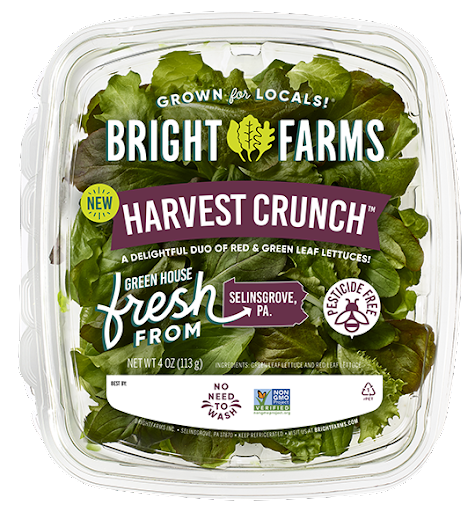WTF is Up w/Bright Farms?
Did you miss it too? One of its late-stage investors was the slow absorption of BrightFarms – Cox Enterprises (yes, the cable company).
Here’s the public story of BrightFarms, for those of you not tracking the cleantech/agritech cross-over.
- Paul Lightfoot and Ted Caplow founded Bright Farms in 2010 as a hydroponic greenhouse platform for growing popular produce varietals closer to grocery stores at reasonable prices. It is a supply chain, cost-reduction platform primarily. The consumer idea was to overcome the food safety issues, and massive recalls caused by centralized lettuce mega-ag, operations in Salinas, CA and Yuma, AZ, and reduce retail prices for high-quality greens.
- Funding: Series A-E = $215M(!)
- Farms = 5 (although they aborted an earlier plan to already be at 20-25, thankfully)
- Revenue = ~$20M annually in trailing POS sales (2020)
- Est. Unit Sales = 5.73M over five greenhouses
- Products = Greens at $3.49 SRP
- # UPCs = 10 (excluding Basil)
- Unit Price = $3.49
- Costs of production per acre (much lower than regular agriculture, excluding debt to build the facilities); i.e., higher gross margins than regular packaged greens
- Max units/Greenhouse = 4,000,000, currently operating at 25% of capacity
- Estimated U/S/W =55 U/S/W featuring large, multi-facing displays at Giant and other early retailers or ~30% market share where sold (on pure crude average in U.S. stores for salad greens and mixes)
This is a phenomenal velocity story buried under a flurry of massive, even suspicious, follow-on raises. Who the hell raises 10X their trailing sales in food? Folks were pitching to non-food industry investors!
Look, the revenue model here absolutely kills that of Salinas, CA, although I can’t reveal the precise details. Hence the enormous investor interest all along. The issue remaining for Cox is how many more stores can BrightFarms perform at this high velocity? Does Bright Farm’s velocity grow at same-stores, and for how long does it grow? The latter is essentially a question of how many of America’s 59% of HHs who eat packaged salad greens remain open to switching to local? I don’t see a pathway to $1B in sales myself because only so many Americans care about quality greens (or even make salads at home). The early experiment at Giant Foods may have revealed the answers to their team.
While $14M in wholesale sales (revealed to FoodNavigator last Fall) or roughly $25M in retail revenue may seem low for an eleven-year-old premium brand, that is only when viewed from the perspective of typical American venture capitalists. If we assume BrightFarms sold $500,000 max in year one (unlikely), then the rough 10-year CAGR for the company is an impressive, albeit sub-exponential, 49%. Nice work.
Brightfarms plans to produce additional product types eventually and will need to if they want to become a $1B wholesale platform (i.e., $2B in retail sales).
However, how and when Cox Enterprises sees an ROI on over $100M in investment in the business remains their little secret. I suspect their absorption had a lot to do with the fact that there is no private equity or strategic acquirer interested anytime soon, even though, in ten more years, Brightfarms might easily be a $500M trailing sales business.
I advised BrightFarms to slow down pro bono in 2018. They slowed down building greenhouses, and they brought in a professional marketing/ops team from BigCo, which may have actually helped slow them down..but in a good way when you’re approaching things like a Silicon Valley investment.
Sources: Instacart pricing at Giant Foods, Bright Farms website, public news sources from 2020, United Produce Association Fresh Facts on Retail Q1 2020 on salad greens unit sales
